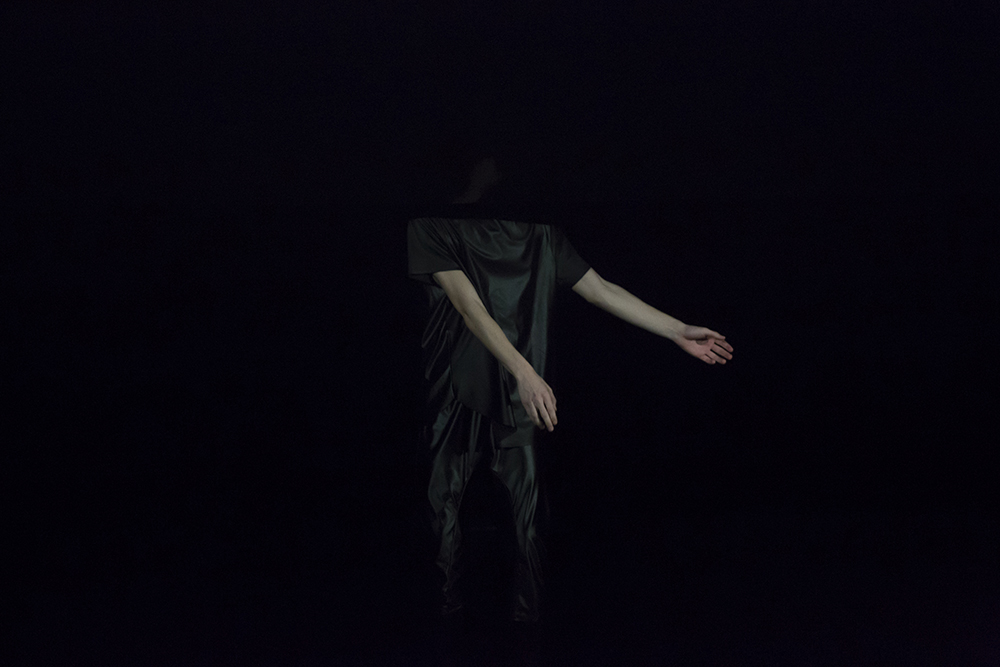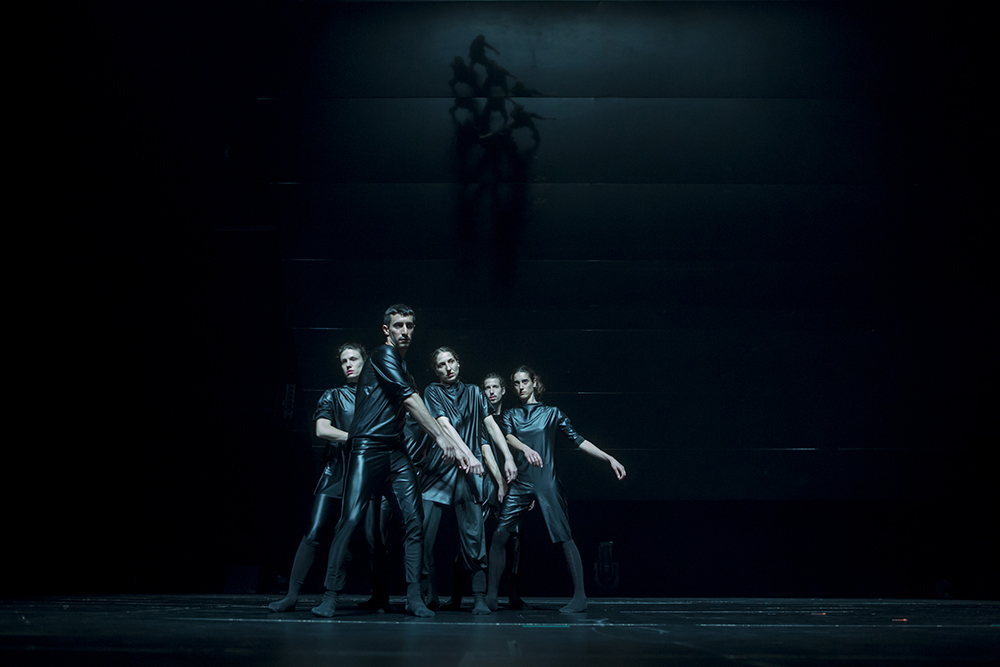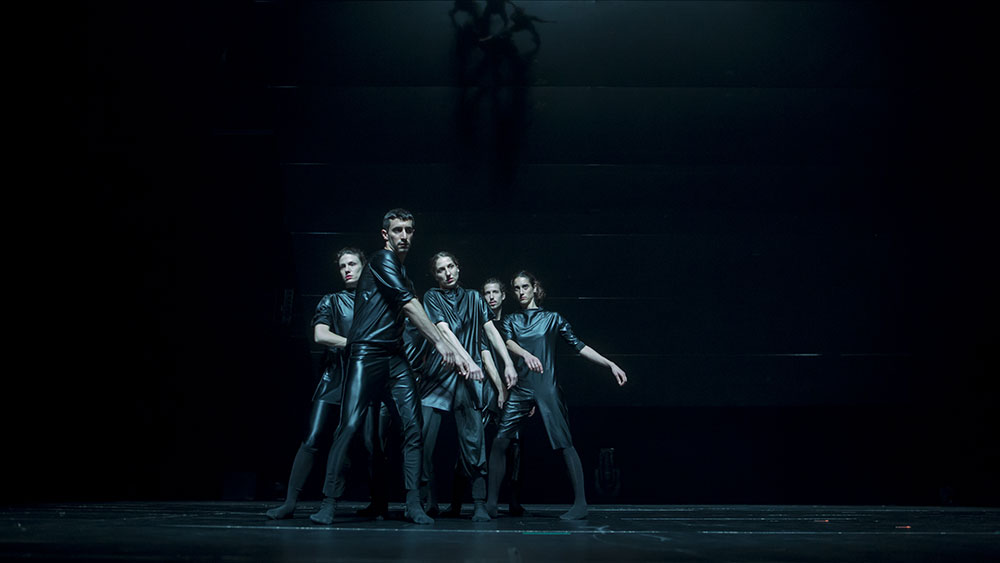
Review: Larsen C at Heath Ledger Theatre
Larsen C at Heath Ledger Theatre
Friday, February 21, 2025
Roughly half the size of Tasmania, Larsen C is a giant body of immobile water in Antarctica. This 10,000-year-old glacier/ice shelf moves so slowly that the human senses cannot detect it. As the Perth Festival program note puts it, ‘It’s as if the pulse of its movement is absorbed by space and time.’ So too was the movement of Christos Papadopoulos’ stunning contemporary dance work of the same name.
Deliberately slow though not quite glacial (the show runs for but an hour and covers a lot of ground), Larsen C is meticulously measured and precise. There were no giant leaps, jetés, or swift passes across the Heath Ledger stage. Instead, the six dancers slowly shuffled sideways through the space, mime-footed (toes together, heels apart; heels together, toes apart). Their tightly synchronised movements were like gentle lapping waves, a school of startled fish, or a murmuration of starlings. The effect was mesmerising; the audience were transported into a nether world, a deeper level of the human spirit.
The show began and finished in total darkness. In between, we were taken into a mysterious twilight world through which, like wraiths, the six black-clad dancers wove their hypnotic spell.
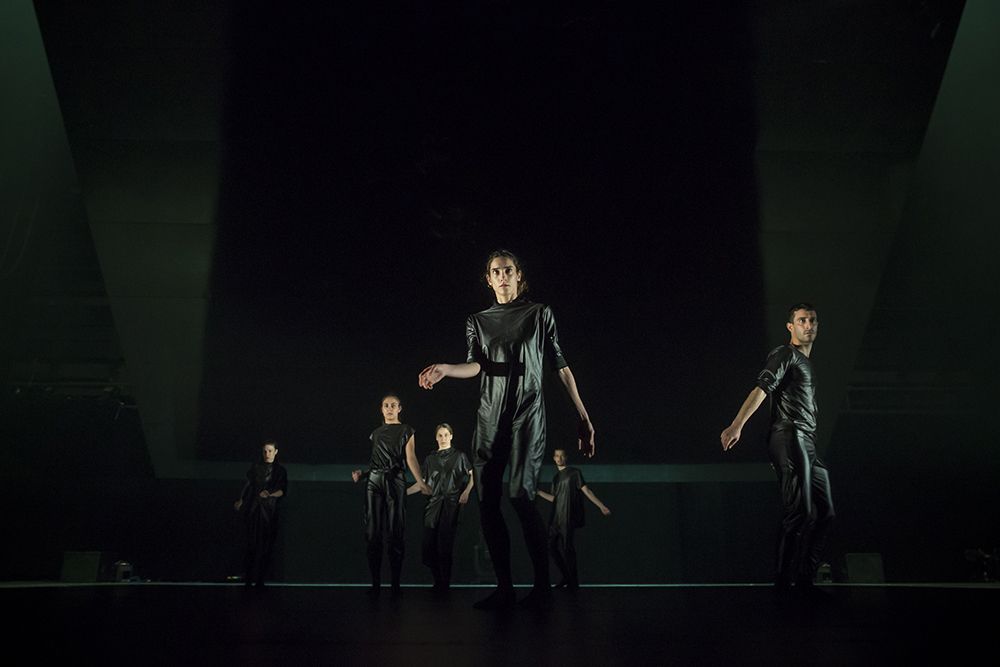
The opening image, a glowing white orb that gradually emerged from the darkness, was ambiguous. You couldn’t tell whether it was the back of a close-up head or a faraway torso. As the light gradually came up, the image congealed into a strangely disembodied figure hovering at the very back of the stage. More light, and the figure took definite form: a man floating sinuously in space. Evolving into a shadow play along the side wall, he was joined diagonally downstage by a second female figure. They engaged in a wary seduction, like courting birds or a disrupted disco dance, before another couple, then a third, quickly joined them.
From here the completed ensemble fractured and reconfigured through a plethora of permutations. A triple pas de deux, one against five, trios forming Shivas and entwined insect-like figures, finally a six-bodied being marauding across the stage. A prowling street gang, fearful, wary, cool, and threatening, they swayed sideways and swarmed forward in perfect unison, like that wave lapping the shore, those starlings.
Utterly beautiful and captivating, every moment magic, every movement magnificent, it touched a deep vein, the all-pervading suspicion and sense of doom that seems to circle the twenty-first-century consciousness. As the show progressed, you were transported further and deeper into an intensely personal yet strangely connected realm. Eerie and invigorating in equal measure, arresting in its originality.
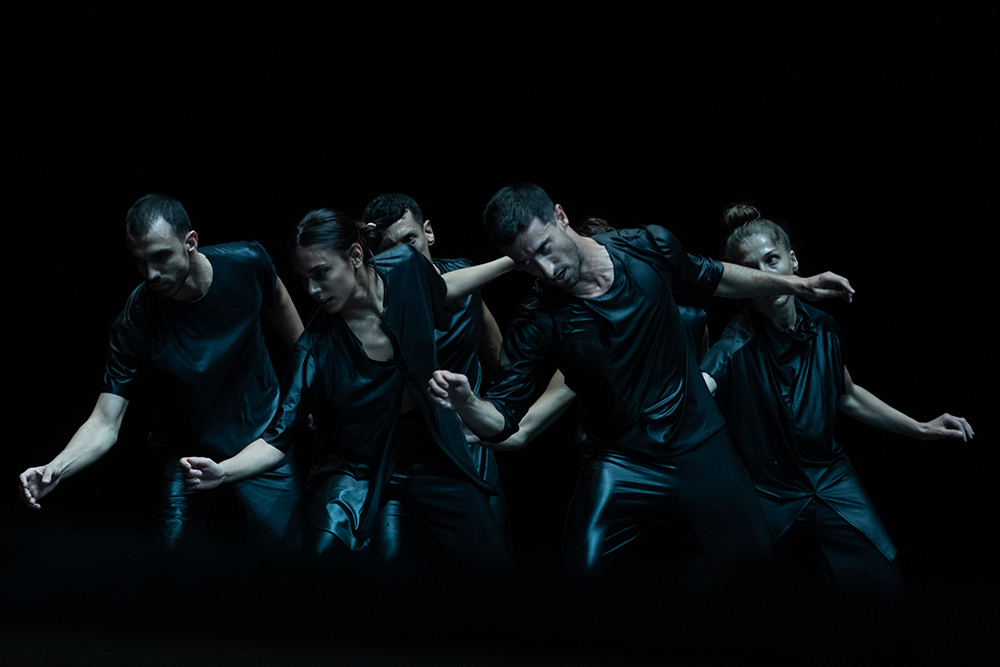
Composer, musician, and sound artist Giorgos Poulios’ score was the perfect foil for Papadopoulos’ choreography. Hovering between an abstract soundscape and a rhythmic pulse, it moved from a gas-jet hiss and rumble through to a Pink Floyd-like throbbing bass and finally a distressed organ.
Clio Boboti’s minimalist set, little more than a grey smudge along the back wall, and Eliza Alexandropoulou’s subtle lighting design were also perfect for the sense of foreboding.
Entering the final act, a single red spotlight shone from the back of the stage directly out into the audience, a bloody sunrise or sunset through a falling fog of dry ice. The dancers congregated at the back of the stage, figures half hidden in the mist. Disembodied hands dangled from the cloud. Couples spread over the stage, embracing, before falling into a line along the back wall. Moving sideways, they bumped into each other, then quickly shuffled apart. It was playful and comic, like scared little birds on a perch.
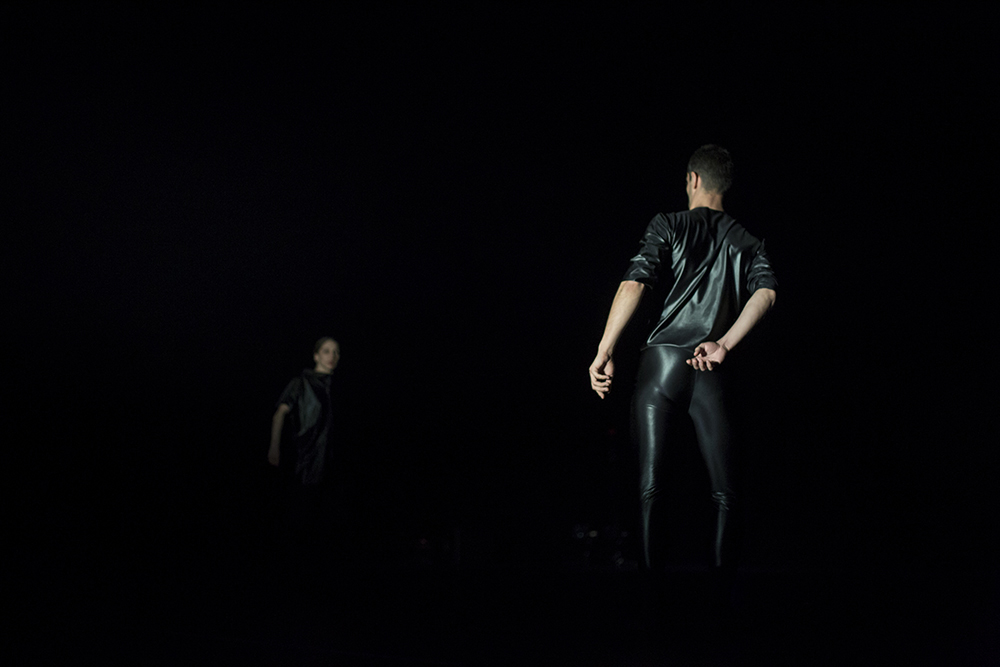
Quietly five of the figures exited the stage, leaving the original solo male to perform, through the mist, a weirdly contorted hand dance. Elastic-limbed and contorted, both hands were distorted to one side of the body, one stretched behind the back. Unsettling and weird, the light faded to black.
Christos Papadopoulos is one of the new wave of contemporary Greek choreographers who have come to prominence in recent years. In the decade since graduating from the Drama School of Greece’s National Theatre, he has created six major works. As with many of the dancers in his troupe, he supplemented his dance and theatre training with a more conventional course of study—political science. A diverse company, others have doubled their performance degrees with chemical engineering, art history, Spanish literature, and management science and technology.
Conceived in 2021, Larsen C has been presented in more than 25 venues and festivals across Europe. It was recently awarded the inaugural Rose International Dance Prize, a biennial prize for original dance creations in any style from across the globe.
Like music, contemporary dance only has a partial need for metaphors or programs. They are great for inspiration and essential for description, but the power of the form lies in its immediacy, its direct connection with human emotion. Who needs analogies when the captivating beauty of bodies in motion speaks to us so directly? Such was the effect of Larsen C. A brilliant work, a great addition to the 2025 Perth Festival program.
IAN LILBURNE
